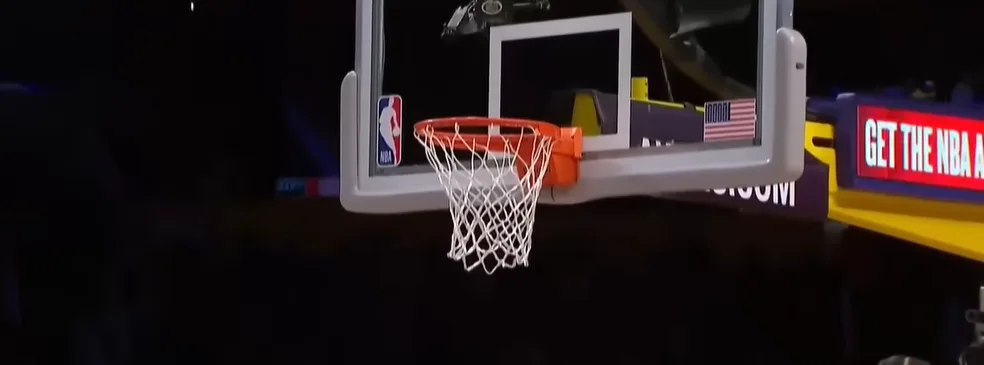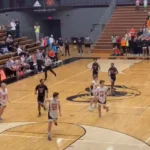Just a month before the WNBA season officially tipped off, a bombshell dropped: Coach, the luxury brand, was announced as the league’s official handbag partner. This wasn’t just a marketing deal; it solidified a long-brewing relationship between WNBA players and the high-fashion world, signaling a new era where style and sport are truly intertwined. Thanks to the explosive growth of social media, WNBA stars are no longer just athletes; they are bona fide fashionistas, using the stadium “tunnel” as their personal runway.
- From Tunnel Fits to Brand Deals: The New Face of the WNBA
- A Look Back: When Style Was Subdued and Controlled
- Breaking the Mold: Early Acts of Style Rebellion
- The Social Media Surge: From Anonymity to Style Icons
- The Unseen Challenges: Navigating the Nuances of Style and Brand
- Style as Strategy: Powering Growth and Engagement
- My Take
From Tunnel Fits to Brand Deals: The New Face of the WNBA
The phenomenon of the “tunnel fit” those epic pre-game walk-ins has transformed how players express themselves. We’re talking full-on leather suits, custom Louis Vuitton tees, and dresses with daring slits. The goal? To slay and make a statement. Caitlin Clark rocking a Miu Miu bandana top, or Skylar Diggins gracing an arena in Thom Browne, are now iconic moments. Teams themselves are amplifying these looks on official social media channels, and fans, a growing, global audience, are devouring every outfit. The Instagram account LeagueFits, which spotlights both NBA and WNBA fashion, boasts over a million followers, with fans glued to their screens, eager to see their favorite players’ next ensemble.
This vibrant style scene is a perfect reflection of today’s booming WNBA. With record-breaking viewership and an influx of buzzing new stars, the league’s energy is palpable. Rookies are landing Coach ad campaigns, Caitlin Clark is decked out by Prada, and established stars like Courtney Williams and Natisha Hiedeman are gracing the pages of Vogue in Burberry. As Ticha Penicheiro, a league veteran, puts it, the tunnel fits are “almost more important than your free throw percentage” these days. Rookie Maddy Westbeld of the Chicago Sky adds that coming into the league, everyone feels empowered to be an artist, even sharing boots and purses among teammates for the perfect outfit, as Rae Burrell of the LA Sparks attests.
A Look Back: When Style Was Subdued and Controlled
This explosion of personal style stands in stark contrast to the WNBA’s early days. Michelle Smith, a senior writer at The Next Hoops who has witnessed the league’s evolution since its inception in 1997, recalls a very different landscape. In the nascent league, game-day outfits were an afterthought. The league actively pushed a specific, overtly feminine image, often regardless of individual players’ preferences. “I remember skirts and dresses and heels and makeup and hair down,” Smith says, explaining the league’s strategy to appeal to the broadest possible audience by “feminizing” players in their marketing and imagery.
This enforced femininity came with strict rules. Ticha Penicheiro, drafted in 1998, remembers an era before pre-game photographers or tunnel fits. Players simply showed up in team sweats. But one rule, in particular, sparked widespread defiance: the ban on jeans.
Like the NBA, the league demanded players look “professional.” However, unlike their male counterparts, WNBA players didn’t have the luxury of private, chartered flights until just last year. They flew commercial, making them highly visible to the public, and the league wanted them to appear “presentable.” This led to confrontations, with players like Ticha declaring, “You don’t pay us enough to tell us what we can’t wear!” Even legendary Diana Taurasi was fined for wearing ripped jeans and instructed to wear slacks and penny loafers while traveling. “It was ridiculous,” Penicheiro recalls, “everybody was like, ‘No, we’re putting our foot down.'” Smith points out that the league was essentially a startup then, heavily subsidized by the NBA, still trying to define its identity and audience. Players were largely invisible off the court, with limited avenues to showcase their personalities or individual style beyond rare magazine features.
Breaking the Mold: Early Acts of Style Rebellion
Despite the restrictive environment, players found subtle and sometimes not-so-subtle ways to express their flair. Veteran players with more disposable income would splurge on designer pieces, though stylists were incredibly rare. Tina Thompson was known for her signature lipstick, while Lisa Leslie always sported fresh manicures. For one All-Star game, understanding the spotlight would be on her, Ticha Penicheiro shelled out a remarkable $5,000 for five custom suits after a stylist consultation.
As the league matured, so did its relationship with personal expression. Smith highlights the draft as a new canvas for players to break free from corporate expectations. Once confined to feminine pantsuits or dresses, draft day became a platform for authentic self-expression. Brittney Griner’s 2013 draft day look a tailored off-white suit paired with matching white Converse, was a monumental moment. As the league’s most exciting incoming player, her bold, masculine style made an undeniable statement. “Brittney came into that draft day, from a fashion standpoint, wholly herself,” Smith remembers, suggesting it “might have been a catalyst point for the league in terms of players really getting to express who they are, their identities, their queer identities.”
The envelope continued to be pushed. Ty Young, renowned for her tomboy aesthetic, even launched her own fashion brand while still playing in 2016. That same year, Swin Cash, then with the New York Liberty, graced the cover of Sports Illustrated, not in her uniform, but in a stunning bright red Michael Kors silk chiffon dress. These moments chipped away at the old narrative, paving the way for today’s style revolution.
The Social Media Surge: From Anonymity to Style Icons
For many years, WNBA players, particularly rookies like Sylvia Fowles (who remembers people thinking she was still on a college team when drafted to the Chicago Sky), lacked mainstream notoriety. Finding clothes that fit the unique physiques of women who are often 6’5″ with size 11 feet was a perpetual nightmare, as stylist Amadi Brooks, who has worked with A’ja Wilson and Sydney Colson, attests. Moreover, the constant travel from high school through college and into professional careers left little time for players to explore and define their personal style.
But the advent of social media irrevocably changed the game. LeagueFits, launched on Instagram in 2018, rapidly became a pivotal platform, catapulting NBA and WNBA fashion, especially tunnel fits and personal expression, into the global spotlight. “Once we started getting paid more attention through social media, through television contracts, that’s when you start to see more personality come out as the tunnel fits,” Fowles observed. Now, a player’s killer jacket or amazing heels can generate buzz even among those unfamiliar with their on-court skills. The days when WNBA players were only seen in uniform are gone; a well-executed “fit” can now generate serious public and media attention, cementing the idea that “the players are a brand,” as Penicheiro asserts.
The Unseen Challenges: Navigating the Nuances of Style and Brand
Despite the progress, the intersection of style and professional sports isn’t without its complexities. Players are now grappling with the profound question of “who are you off the court?” Amadi Brooks, for instance, worked with Sydney Colson to harness her style to showcase herself beyond basketball, even dressing her in an all-leather Karl Kani outfit for a stand-up comedy routine during All-Star Weekend. Brooks emphasizes that this is not just for public perception, but “for her as a player and her as my client to feel like, ‘Okay, you see the attention you’re getting because you’re doing these things,’ this is who you can be and this is what you’ll look like in this next chapter.”
However, the spotlight isn’t always evenly distributed. The inaugural Coach campaign, for example, featured five rookies, but primarily highlighted Paige Bueckers, who was already widely known, and predominantly showcased more “feminine” aesthetics. Courtney Mays, a stylist for Sue Bird and Breanna Stewart, notes a “massive focus on players who are more-feminine-presenting” in brand partnerships, which she believes overlooks the “dynamic diversity in the W that makes it so special” — a diversity she sees as the league’s superpower.
There’s also a degree of superficiality, as one stylist mentioned, Coach turning down a “well-known” WNBA player they pitched. Furthermore, player power still has its limits within league regulations. Minnesota Lynx guard Courtney Williams, for instance, faced multiple fines this season for wearing Moolah Kicks, a small, woman-owned basketball shoe brand, simply because they lacked a league-wide agreement. These incidents underscore the ongoing tension between individual player agency and institutional control.
Style as Strategy: Powering Growth and Engagement
Ultimately, the embrace of personal style is proving to be a powerful engine for the WNBA’s growth. Michelle Smith notes that WNBA fan engagement hasn’t always been robust, but fashion has emerged as a significant driver of interest. As women’s sports continue their meteoric rise and the league plans its expansion, this heightened engagement is invaluable. “Frankly, sometimes, it puts more butts in seats,” Smith concludes, “And that’s ultimately what the league needs.”
The WNBA’s style revolution is more than just about clothes; it’s a testament to players’ unapologetic confidence and diverse identities. This shift from league-mandated uniformity to player-driven style is a statement about agency, breaking free from outdated expectations, and connecting with fans on a deeper, more authentic level. It’s smart business, captivating entertainment, and a resounding win for individuality, making the WNBA more vibrant and engaging than ever before.
My Take
This isn’t just about clothes; it’s a revolution. WNBA players are finally getting to express their authentic selves, on and off the court, through fashion. It’s powerful because it’s a direct reflection of their diverse personalities, identities, and unapologetic confidence. This shift from league-mandated femininity to player-driven style isn’t just cool to look at; it’s a statement about agency and breaking free from outdated expectations. When players feel seen and empowered, they shine even brighter, and fans connect with that authenticity on a much deeper level. It’s smart business, great entertainment, and a huge win for individuality. What they wear isn’t just fabric; it’s part of their story, and frankly, it’s making the WNBA more vibrant and captivating than ever before. This is what true growth looks like: celebrating every facet of these incredible athletes.





